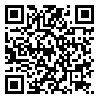BibTeX | RIS | EndNote | Medlars | ProCite | Reference Manager | RefWorks
Send citation to:
URL: http://jdisabilstud.org/article-1-3010-en.html
2- Associate Professor, Department of Psychology, Payam Noor University, Tehran, Iran
3- MSc in Educational Psychology, Payam Noor University, Tehran, Iran
Abstract
Background & Objectives: One of the most important harms of conduct disorder is the failure in empathy and social and emotional mutual relations. Increasing empathy in children and adolescents with signs of conduct disorder can be one of the important educational and training goals in educational correction centers focusing on growth–oriented prevention. One of the best evidence–based methods for increasing empathy in the age of technology is storytelling. When children and teenagers hear a story, they constantly connect the events and characters of the story with their experiences of the events. The process moves quickly in the story room, and almost everyone remembers the same thing. In fact, by identifying negative thoughts and understanding how and why they affect the aggressive feelings, the story therapist helps the teenager learn how to re–evaluate events and see them from a different and more positive angle, and replace the involuntary patterns and self–destructive thoughts with more logical and optimistic patterns, and this can change a person's behavior and type of feelings. In this regard, the present study's purpose was to study the effectiveness of purposive storytelling therapy on increasing empathy of adolescents with conduct disorder symptoms residing in correction and rehabilitation centers.
Methods: This is an applied study according to the purpose and quasi–experimental according to data collection with a pretest–posttest design and a control group. The statistical population included all male adolescent clients at the Yazd City Correction and Rehabilitation Center, Iran, in 2019. Of them, 28 were selected by purposeful sampling based on the inclusion criteria. They were randomly divided into experimental (n=14) and control (n=14) groups. The inclusion criteria included informed and voluntary consent of the samples to participate in the research; being male; aged 12 to 18 years; at least one month physical and boarding presence or referring to the correction and rehabilitation center due to violation of others' principal rights, violation of social or ethical norms corresponding to the age or laws, personal misconduct in work, social, and academic fields with misbehavior signs including aggression and attacking other people, animals, rape, vandalism, deception, and serious violation of rules. The exclusion criteria were not being interested in participating in the sessions, discharging from the correction and rehabilitation center, catching a disease, or passing the disease to others.
The research tool was a questionnaire measuring emotional empathy (Mehrabian and Epstein, 1972). The experimental group underwent story therapy intervention for twelve 90–minute sessions. Univariate analysis of covariance was used for data analysis in SPSS–26.
Results: The results showed that storytelling increased general empathy (p=0.041) and had a significant effect on the components of empathy, including expressive empathy (p=0.020), participatory empathy (p=0.038), emotional stability (p=0.038), and empathy towards others (p=0.048). Based on the findings of this research, story therapy can be used as one of the methods to restrain and control behavior, and by using the principles of education and practical training and also strengthening the presented skills, the skill of empathy would be increased and improved. The results showed that this training in the form of stories, especially in the teenage years, can cause identification with the story's positive characters and increase teenagers' self–confidence and self–efficacy. Providing the ability to understand others can lead to increased empathy skills.
Conclusion: Based on the research findings, targeted story therapy affects the empathy of adolescents with symptoms of behavior disorder residing in the correction and rehabilitation center and increases empathy in these adolescents. Stories can be used to teach skills and increase people's awareness. In story therapy, through identification with the story's characters, a person can understand the emotions, thoughts, and feelings of the story characters and become aware of these emotions and thoughts in himself and others. When a person puts himself in the different positions of the heroes of a story, he can differentiate emotions and thoughts in himself and others, achieve divergence from self–interview, and increase empathy skills by providing the ability to understand others.
| Rights and permissions | |
 |
This work is licensed under a Creative Commons Attribution-NonCommercial 4.0 International License. |



